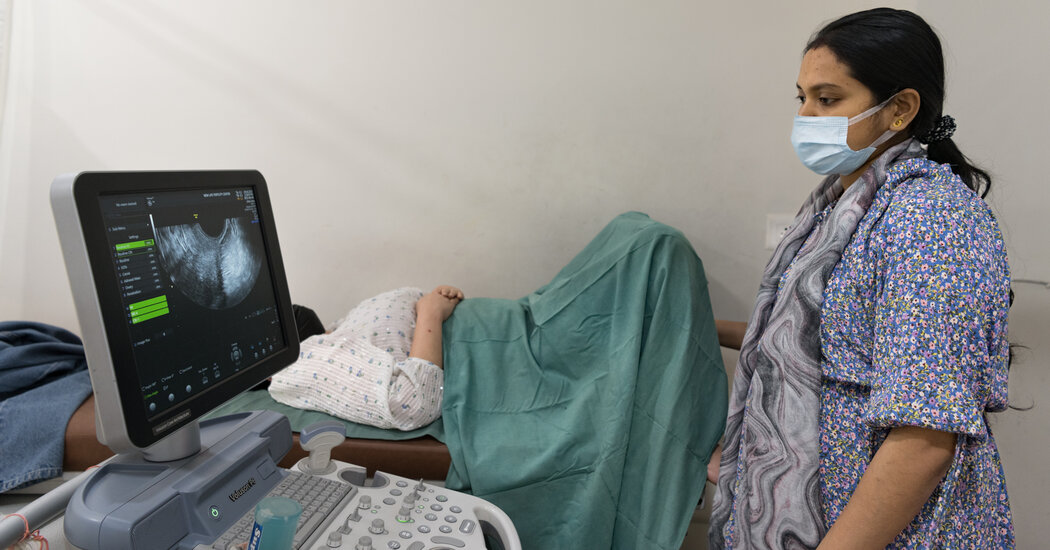Global Courant 2023-05-29 12:00:24
Nestled in the Himalayas and surrounded on three sides by Nepal, Bhutan and Tibet, Sikkim stands out in the teeming diversity of India’s states. It has the highest mountain in the country. It is the world’s largest producer of smoky black cardamom. It also has the smallest population in India, less than three-quarters of a million people, and the lowest birth rate.
That last distinction worries state leaders about the survival of the unique culture spawned by Sikkim’s mixing of ethnicities, religions and geography. And they take action.
While India as a whole, at 1.4 billion people and growing, will soon become the most populous country in history, the situation in Sikkim has become so dire that the local government is essentially paying people to have babies.
The effort points to a demographic reality in India that is often overshadowed by its sheer scale. Population growth is very uneven. A few states in the underdeveloped north account for a large portion. Other parts of India – especially the south, where incomes are higher and women are better educated – are more like East Asia or Western Europe, with an aging population that is shrinking or will shrink in the coming years.
In Sikkim, the birth rate has plummeted, officials say, for another reason: a lack of economic opportunities, often forcing men and women to seek jobs outside the state, leading to marriages later in life.
Traditionally, women in Sikkim enjoy more freedom than women in many other rural parts of India, where they are often limited to housework and raising children. With a female participation rate of the labor force of 59 percent, much higher than the national average of about 29 percent, young people prefer careers to early marriage and are having fewer babies.
State officials want couples to have at least three children. Government statistics show that women there have an average of 1.1 during their reproductive years, well below the national figure of 2, and below the figure of 2.1 needed to maintain a stable population without migration.
State officials say their own surveys put the figure at 0.89, a rate just above that of South Korea, the world’s least fertile country.
Countries have tried a number of measures to increase birth rates, but have met with only modest success at best.
In Sikkim, the government is pursuing a three-pronged strategy. Since August, it has been offering money to childless citizens of childbearing age for in vitro fertilization treatments. It also provides couples with one child with a monthly allowance of about $80 if they have more. And civil servants are offered salary increases, a year’s worth of maternity leave and even a babysitter if they grow their family.
The stakes are high as birth rates fall rapidly among all residents of Sikkim dominant ethnic groups: the largely Hindu Nepalese, the Lepchas and the Bhutias, both predominantly Buddhist.
“They either have to see their culture disappear or they have to entice people to have more children to keep it alive,” said Alok Vajpeyi, an official with the Population Foundation of India.
The social forces that guide people’s decisions about having children are difficult for any government to change. But Sikkim’s hopes IVF will help those who already want children.
The Sikkim government oversees a program that pays about $3,600 for the first attempt at IVF treatment and about $1,800 for the second attempt.
In offering IVF, the government must face widespread stigma, including rumors that babies born through the therapy are made in “plastic boxes” or that such children are genetically someone else’s.
“We are not only fighting misconceptions and rumours, but also trying to save our way of life,” said Shanker Deo Dhakal, a top official in the office of the chief minister of Sikkim.
Since the policy was introduced, more than 100 couples have opted for IVF treatment and more are being added every day. Officials said they are also spending more money educating people about IVF through mass media campaigns.
Arpana Chettri, 40, a civil servant, has experienced the stigma firsthand. On a recent morning, she rocked her 6-month-old daughter at her home in Gangtok, the capital of Sikkim, as she sang her a lullaby in the Nepali language. She is on maternity leave for a year.
She gave birth after her second IVF procedure. “But now,” said Mrs. Chettri, “the problem is people ask, ‘Did you have the baby after the shot?'” referring to the misconception that IVF babies are made in plastic tubes.
“How do I tell them this is my baby? I had dozens of injections and it was painful,” she said. “But she was in me for nine months, not in a refrigerator.”
A couple, Yogesh and Rupa Sharma, seized the opportunity for Ms. Sharma to undergo government-funded IVF treatment after five failed attempts.
Mr Sharma said he wanted to talk openly about his own family’s IVF experience to encourage people to “give it a try”.
“Childlessness can feel very lonely,” he said. “As our population is shrinking rapidly, only science can help us.”
Smita Sharma contributed reporting.








